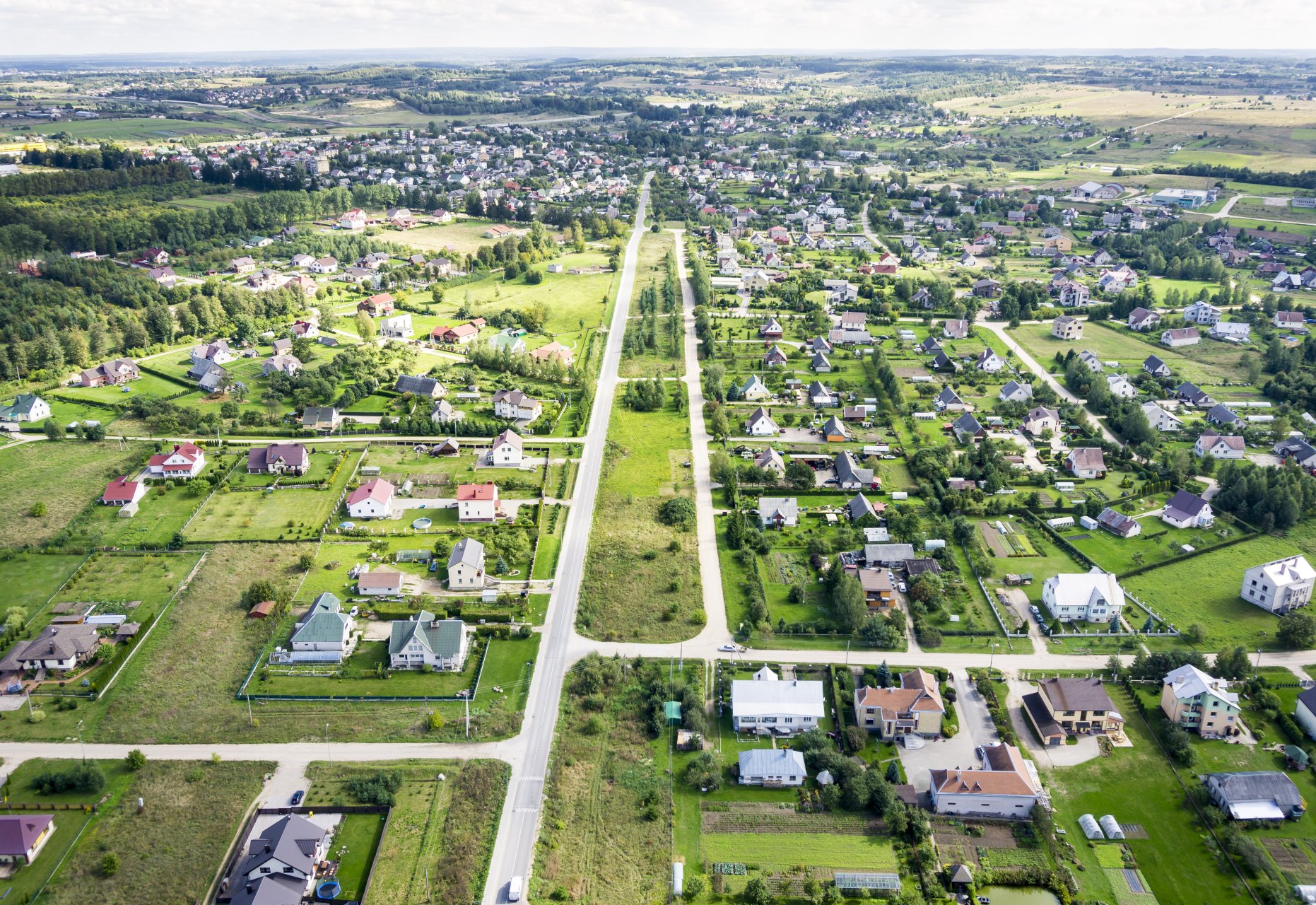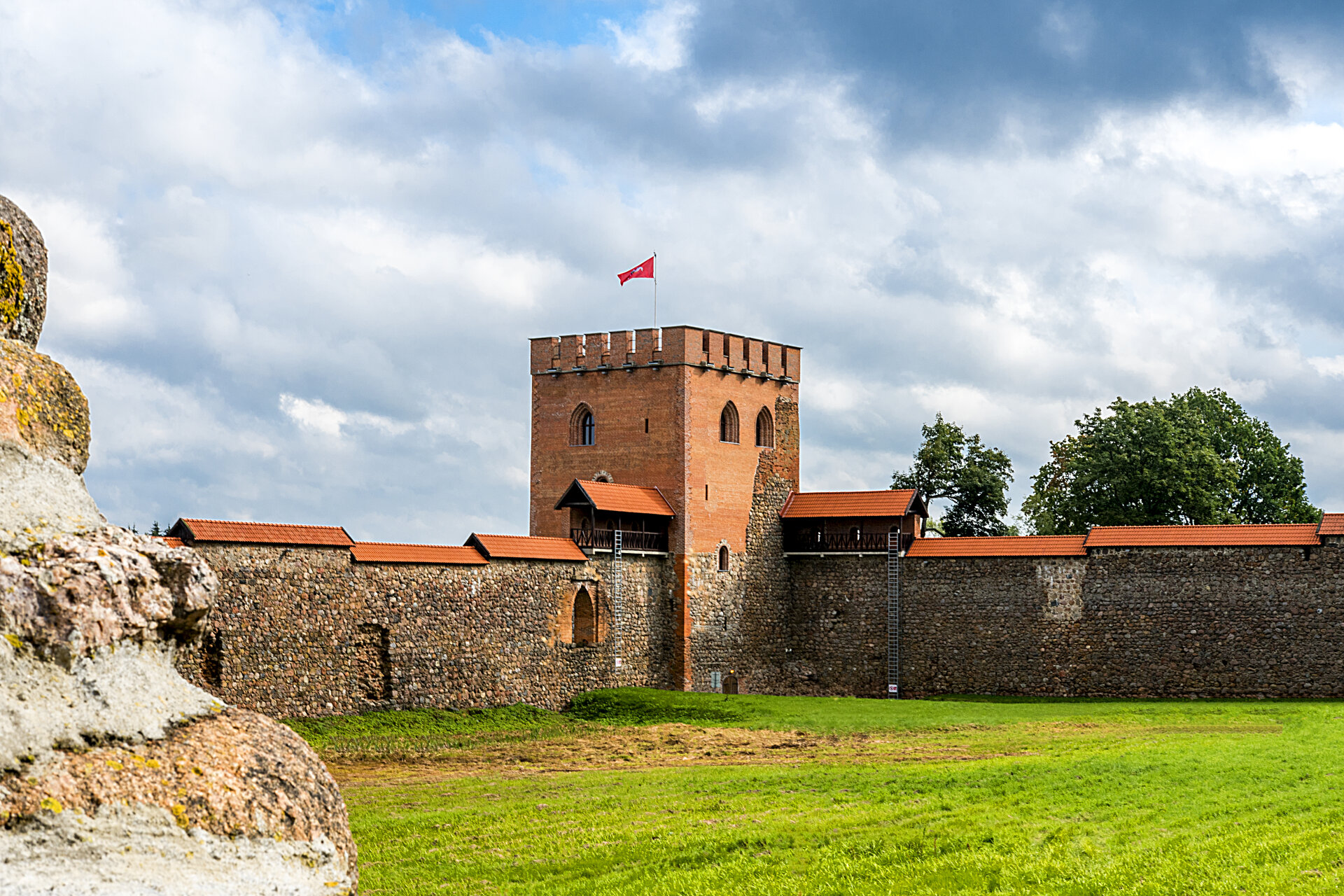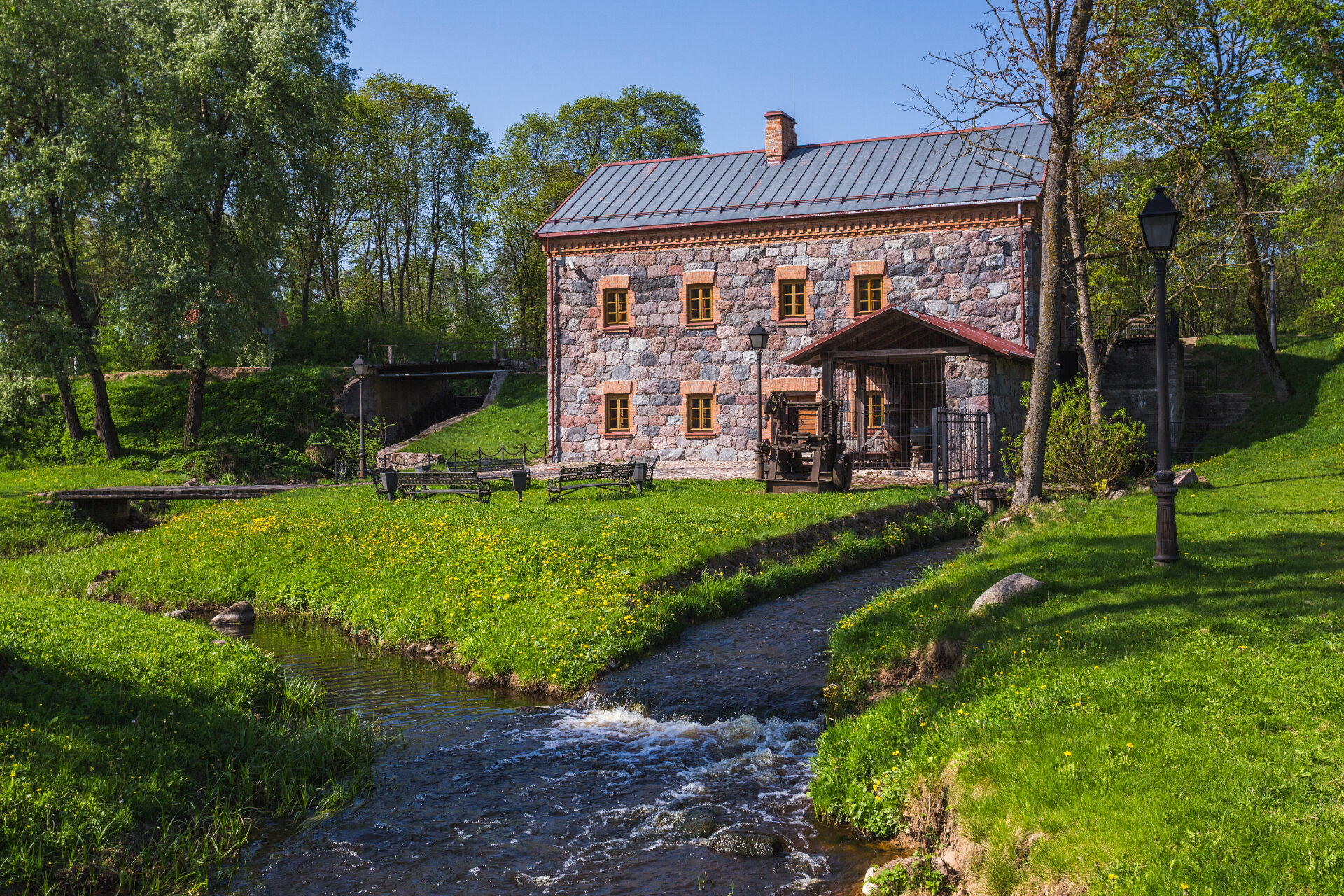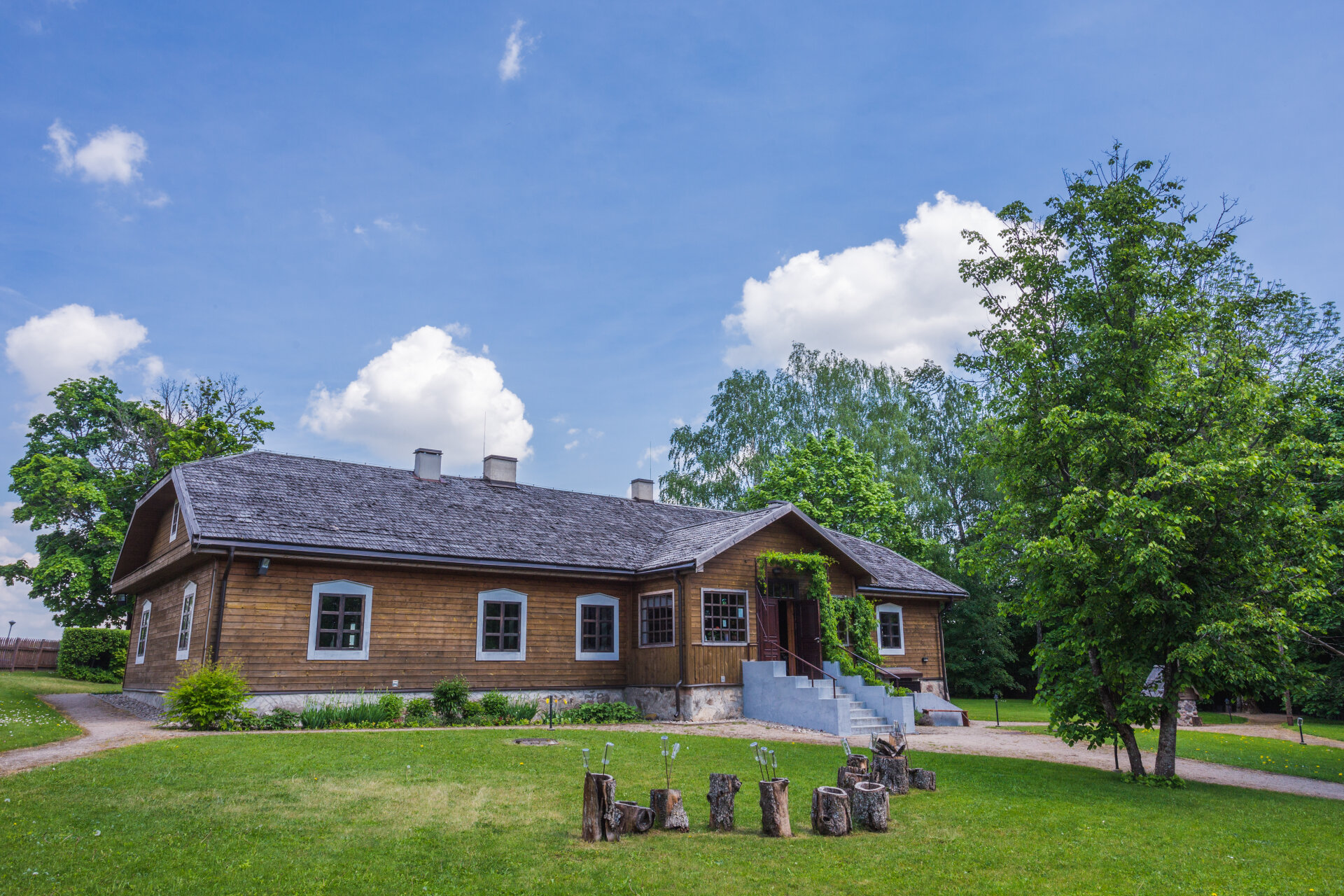
General information about the Vilnius District Municipality

The Vilnius District Municipality is one of the largest municipalities in Lithuania, covering an area of 2,129 square kilometers and divided into 23 elderships. It surrounds the capital city of Vilnius to the north, south and east. With its well-developed public and business infrastructure in rural areas, the district is growing harmoniously and dynamically, attracting new investments and ensuring a high quality of life and environment for its residents.
The Vilnius District shares its eastern border with the Republic of Belarus. To the north, it neighbors the Švenčionys and Molėtai districts. Its northwestern side borders the Širvintos District, while to the west lies the Elektrėnai District, to the southwest the Trakai District, and to the south the Šalčininkai District.
Rural localities dominate the Vilnius District, with 1,163 villages. When Vilnius District was artificially separated from Vilnius City, it retained only Nemenčinė, a city with its own distinct parish. Additionally, there are four towns within the municipality: Bezdonys, Maišiagala, Mickūnai, and Šumskas. 95 % of Vilnius District residents live in villages, significantly higher than the Lithuanian average of 33 %. The people of the Vilnius region are known for being hospitable, sincere, and distinctive, preserving their unique multicultural traditions across generations.
Residents
Currently, 118,475 residents live in the Vilnius District (according to January 1, 2025, data from the Population Register, provided by the State Enterprise Centre of Registers). The Vilnius District Municipality is known for its diverse and multicultural population.
According to the 2021 census of residents and housing carried out by Statistics Lithuania: 46.75 % of the Vilnius District population is Polish, 38.52 % are residents of Lithuanian nationality. Among the smaller groups are: Russians – 7.35 %, Belarusians – 3.26 %, Ukrainians – 0.63 %, and residents of other nationalities – 0.86 %. 2.64 % has not specified their nationality.
According to the data of the 2021 census of residents and housings carried out by Statistics Lithuania: 46.75% of the Vilnius district population is Polish, 38.52% are residents of Lithuanian nationality. Amongs the lower numbers are: Russians – 7.35%, Belarusians – 3.26 %, Ukrainians – 0.63 %, and residents of other nationalities – 0.86 %. 2.64% has not specified their nationality. This census data was analyzed and compiled using information provided by 99,295 inhabitants of the Vilnius District.
Landscape
The district's terrain is highly diverse. The Aukštaičiai Upland stretches across the western part of the district, while the Medininkai Upland lies in the southeast. This area is home to Lithuania's highest points: the Aukštojo, Juozapinės, and Kruopinės hills, which rise more than 290 meters above sea level. Meanwhile, the central and eastern parts feature the valleys of the Neris, Vilnelė, and Vokė rivers. Lowlands are characteristic of the district's northern section.
Heritage
The Vilnius District is rich in valuable natural landscapes, historical, architectural, and natural monuments, and ethnographic villages. This wealth creates significant potential for developing tourism and recreational services in rural areas. A key advantage is the district's high forest cover (36.8 %) and abundance of mature forests. The largest forest massifs are found around Nemenčinė. It's also important to consider the influence of the nearby capital city on the number of tourist flows to the Vilnius District.
The Vilnius District possesses considerable recreational potential, especially within the territories of the Asveja and Neris Regional Parks, and in some suburban areas. These regional parks, along with the Alionys, Baravykinė, and Kruopinė landscape reserves, are highly valuable from the perspective of nature conservation and recreation. The most valuable natural complexes are protected in the Grionys, Juozapinė, Kuosinė, and Skersabaliai geomorphological reserves, the Kenos and Vilnius hydrographical reserves, the Medininkai and Pravalo botanical reserves, and the Papio ornithological reserve.
 Medininkai Castle. Located just 2 kilometers from the Belarusian border stands Medininkai Castle, the largest stone keep castle in Lithuania. Irregularly shaped, it occupies an area of 2 hectares (or 6.5 hectares when including mounds and trenches). It is situated on the edge of a plain, adjacent to a swamp. The castle originally featured a double trench, with a wooden wall positioned between the two trenches. A five-story tower was situated at one corner of the defensive wall, and another, smaller tower was constructed on the southern side of the wall. One of the lower gates with a tower was built into the eastern wall, another near the middle of the western wall, and the upper gates were in the northern and southern walls. Medininkai Castle was first mentioned in 1385 when the Teutonic Knights attacked the vicinity of Ašmena and attempted to besiege it. It is certain that the construction of the brick castle was completed before the end of the 15th century. Around the beginning of the 16th century, all the castle's wooden buildings were destroyed by fire. Since 2004, Medininkai Castle has been part of the Trakai Historical Museum. Funds from EU structural funds were received for its restoration, with the first stage of restoration works completed between 2010 and 2012. A museum with four exposition halls has been established in the 27-meter-high tower.
Medininkai Castle. Located just 2 kilometers from the Belarusian border stands Medininkai Castle, the largest stone keep castle in Lithuania. Irregularly shaped, it occupies an area of 2 hectares (or 6.5 hectares when including mounds and trenches). It is situated on the edge of a plain, adjacent to a swamp. The castle originally featured a double trench, with a wooden wall positioned between the two trenches. A five-story tower was situated at one corner of the defensive wall, and another, smaller tower was constructed on the southern side of the wall. One of the lower gates with a tower was built into the eastern wall, another near the middle of the western wall, and the upper gates were in the northern and southern walls. Medininkai Castle was first mentioned in 1385 when the Teutonic Knights attacked the vicinity of Ašmena and attempted to besiege it. It is certain that the construction of the brick castle was completed before the end of the 15th century. Around the beginning of the 16th century, all the castle's wooden buildings were destroyed by fire. Since 2004, Medininkai Castle has been part of the Trakai Historical Museum. Funds from EU structural funds were received for its restoration, with the first stage of restoration works completed between 2010 and 2012. A museum with four exposition halls has been established in the 27-meter-high tower.
 Liubavas Manor Mill. Approximately 20 kilometers from Vilnius, near the Open-air Museum of the Centre of Europe, Liubavas offers a unique cultural attraction: the Liubavas Manor Museum, housed in a stone mill. Built by foreign masters, the stone manor mill retains many of its authentic mechanisms, with almost all still functional today. The second floor of the mill features an exhibition tracing the 500 year history of Liubavas Manor. Liubavas is one of Lithuania's oldest manors, situated in a picturesque area by the Gerėja River, now known as Žalesa. As early as 1546, the first treasury books of Sigismund Augustus, Grand Duke of Lithuania and King of Poland, already mentioned repair works on the ponds at Liubavas Manor. The manor experienced its true Golden Age in the 19th century when it was managed by the Slizienis family, who were related to the Tyškevičiai family. Many other famous names also appear in the manor's history. Besides Sigismund Augustus, the manor was also governed by Mikalojus Radvila Rudasis, and later by Martynas Krišpinas Kirštenšteinas, among other aristocrats prominent in the country's history. Full of mystery, surprises, and discoveries, Liubavas (meaning 'love' in Lithuanian) is presented as Lithuania's most romantic manor thanks to sculptor Gintaras Karosas, who initiated and established a new museum within the unique stone masonry manor mill. This technical heritage monument not only recounts the manor's history but also demonstrates its authentic mill equipment.
Liubavas Manor Mill. Approximately 20 kilometers from Vilnius, near the Open-air Museum of the Centre of Europe, Liubavas offers a unique cultural attraction: the Liubavas Manor Museum, housed in a stone mill. Built by foreign masters, the stone manor mill retains many of its authentic mechanisms, with almost all still functional today. The second floor of the mill features an exhibition tracing the 500 year history of Liubavas Manor. Liubavas is one of Lithuania's oldest manors, situated in a picturesque area by the Gerėja River, now known as Žalesa. As early as 1546, the first treasury books of Sigismund Augustus, Grand Duke of Lithuania and King of Poland, already mentioned repair works on the ponds at Liubavas Manor. The manor experienced its true Golden Age in the 19th century when it was managed by the Slizienis family, who were related to the Tyškevičiai family. Many other famous names also appear in the manor's history. Besides Sigismund Augustus, the manor was also governed by Mikalojus Radvila Rudasis, and later by Martynas Krišpinas Kirštenšteinas, among other aristocrats prominent in the country's history. Full of mystery, surprises, and discoveries, Liubavas (meaning 'love' in Lithuanian) is presented as Lithuania's most romantic manor thanks to sculptor Gintaras Karosas, who initiated and established a new museum within the unique stone masonry manor mill. This technical heritage monument not only recounts the manor's history but also demonstrates its authentic mill equipment.
The Liubavas Manor Mill-Museum has been recognized as one of Europe's best examples of cultural heritage preservation, having been awarded the EU Cultural Heritage Prize and the “Europa Nostra Award”.
 Bareikiškės Manor. Near Vilnius, in Bareikiškės village, along the old Vilnius–Minsk road, stands a 19th-century manor where famous poet Vladislovas Sirokomlė (real name: Liudvikas Kondratovičius) lived from 1853 to 1861. The years the poet spent at Bareikiškės Manor were his most creatively prolific. It was here that Vladislovas Sirokomlė wrote 24 of his works, including one of his most significant creations – "Margiris," which became a symbol of Lithuanian struggles against the Crusaders – and the first tourist guide to Lithuania, "Excursions from Vilnius through Lithuania". In the pages of this guide, the author encouraged local exploration: "...it is a great shame to be completely ignorant of the country we live in, or, even worse, to know foreign lands better than our own".
Bareikiškės Manor. Near Vilnius, in Bareikiškės village, along the old Vilnius–Minsk road, stands a 19th-century manor where famous poet Vladislovas Sirokomlė (real name: Liudvikas Kondratovičius) lived from 1853 to 1861. The years the poet spent at Bareikiškės Manor were his most creatively prolific. It was here that Vladislovas Sirokomlė wrote 24 of his works, including one of his most significant creations – "Margiris," which became a symbol of Lithuanian struggles against the Crusaders – and the first tourist guide to Lithuania, "Excursions from Vilnius through Lithuania". In the pages of this guide, the author encouraged local exploration: "...it is a great shame to be completely ignorant of the country we live in, or, even worse, to know foreign lands better than our own".
In 1973, to commemorate V. Sirokomlė's 150th birthday, a memorial room dedicated to the writer was opened at Bareikiškės Manor. Its exhibition depicts the writer's life and work. A memorial plaque was affixed to the wall. In 2011, Bareikiškės Manor underwent reconstruction. Today, it houses the Vladislovas Sirokomlė Museum, a rural library with an internet reading room, and the Vilnius District Tourism Information Centre.
Bareikiškės homestead is also a place for gatherings of poets from the Vilnius region. It hosts the Poetry Spring festivals organized by the Vilnius District Central Library, as well as the traditional events of Vilnius Polish poets, “Maj nad Wiliją” (“May by the river Neris”).
Reflections of Living History
The Vilnius District is famous for its “Verbos” the unique Lithuanian Palm Sunday fronds. These colorful, intricately braided creations are crafted onto a dry wooden stick, approximately half a meter long and varying in thickness, with the braiding often extending all around. Their diverse patterns are formed from a unique combination of multicolored dried plants, everlasting flowers, and dyed wood shavings, often topped with a tuft of grey or green-dyed lake grasses. Traditionally, Vilnius Verbos featured brightly colored flowers woven in a swirling pattern, reminiscent of a twisted rope. Today, however, contemporary designs more often use grey or pastel colors and simpler compositions. The tradition of these distinctive Vilnius Verbos dates back the times of Prince Casimir.
Verbos, as we see them today, are unique worldwide. They gained fame and were recognized as works of small folk art thanks to the efforts of the prominent artist and painter Ferdinandas Ruščicas (1870-1936). This tradition has to be cherished. The cradle of Verbos weaving is the village of Kriaučiūnai in Zujūnai Eldership. Almost all villages in this eldership are still home to famous Verbos weavers. Since 2000, in Čekoniškės, the palms and appliances house has been opened for visitors.
The Vilnius District is charming with its cultural landscape – architectural monuments, ethnographic villages, folklore ensembles, and the creative activities of folk and professional artists. Visitors to the Vilnius District are sure to be enchanted by its picturesque scenery, wonderful nature, and fascinating cultural heritage sites, creating memories that will last a lifetime.